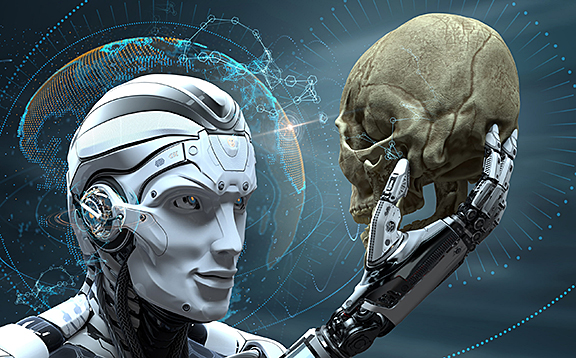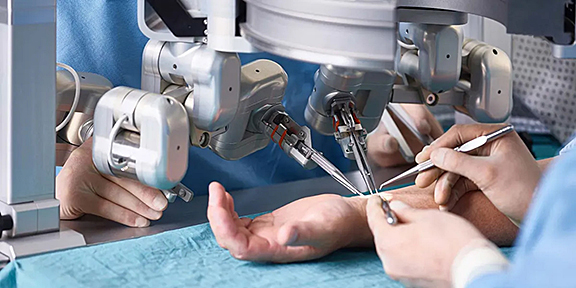A.I. Rules
A.I. is certainly one of the leading topics of discussion these days. Any mention of it is sure to get a groan, a breathless recitation of its possible good or evil outcomes, a quick change of subjects – any or all.
But surely, most of us agree, A.I. will do something, or things that will change our lives.
Of course, to a degree, we’ve been living with A.I. for a while now. Talk to Alexa or Siri, program your destination into your car’s onboard navigation system, add an item (with reminders) to your digital calendar – you’ve essentially tapped into a form of A.I. that is influencing your life, both for the better (it will guide you quickly and easily to your destination, for example), or worse (it will take over your brain’s talent for remembering directions).
When you take a moment to consider the many ways A.I. (or its antecedents) has been, in bits and bytes (all puns intended) taking over some of the mundane chores of our daily lives, like keeping lists, providing reminders, taking notes, compiling playlists, creating photo montages, now writing stories and creating pictures, you can’t help wondering – what’s next?

I had to do a quick scan of A.I. Headlines to get a sense of where it’s all headed. And with that, a handful of ways A.I. is already altering our human landscape – for the better in many ways, but how it also might go wrong.
* Wired Magazine’s headline: Using Generative AI To Resurrect The Dead Will Create a Burden for the Living.
“With ChatGPT and other powerful large language models, it is feasible to create a more convincing chatbot of a dead person. But doing so, especially in the face of scarce resources and inevitable decay, ignores the massive amounts of labor that go into keeping the dead alive online.”
The article goes on to explain that if you want to create a “virtual loved one,” it can be something as simple as chatting online with predictive algorithms mapping out our dead loved one’s responses. It gets more complicated and expensive if the friends and relatives of that person want something more complicated, like a visual, robot, or (we really hope not) biological entity.
* Another source suggests that “artificial intelligence (can help) create a rich learning experience by generating and providing audio and video summaries and integral lesson plans, digitizing and “sculpting” content for lectures, conference, and textbook guides. My mind went immediately to the many interactions I have had with teachers over the years, and the learning that comes from those unexpected, unplanned, spontaneous meeting of the minds, or arguments, that left teacher and student both eager to learn more. Will they, can they, happen with AI?
* Autonomous vehicles are under consideration or development by Toyota, Audi, Volvo and Tesla, among others. The idea is to train computers to think and behave like – or perhaps better than – humans when it comes to driving and avoiding accidents. Certainly the options are interesting. For example, planning for a recent trip required a shuttle from the airport to the hotel, and most of the options were expensive. But what if, like those rentable scooters and bikes you see at the side of the road, or zooming down the sidewalk or street, another option would be to call a car which would drive to your location curbside (on its own), accept your account, and then drive you to your destination – on its own? My dad and I used to conjure up ideas for autonomous driving on long trips, but our solutions largely involved some sort of attachment to a pulling device that would drag your car over long stretches of highway to a point of exit, at which point you’d resume control of your vehicle. Something tells me the robotic model would be more effective and successful. Unless it decided to develop a hostile streak!

* Creating new proteins is a challenge – though it’s exactly the technology that allowed scientists to create an insulin analog for diabetics, and immune cells that are used to fight cancer. But it’s hard work: the scientists must determine how a sequence of amino acids will fold up into a final molecular structure, and then analyze how the protein will actually function. While computers have long been used in generating models drawn to “blueprint” specifications, now AI can take over almost the whole necessary set of steps. But of course, the downside to creating something new is – creating something new. As we’ve long been warned, once you “create life” you become responsible for it.
And beyond specific challenges like protein synthesis, medical science has turned over many chores to AI, from robotic type surgery to diagnosis and treatment plans. The upside to this is, of course, being able to draw up a plan as specific as possible to each patient as quickly as possible, to assess the results, and to compare results with potentially millions of other patients so that formula can be tweaked, improved, or eliminated as needed. For anyone who has had to wait weeks or months to get an appointment, and then had to return again and again for blood work and re-evaluations, the idea that AI could reduce the wait times and perfect the formulation of a treatment comes as a welcome alternative for our current medical care.
As imperfect as we humans are, though, I won’t be looking to eliminate our insights or brilliant moments of discovery from the picture any time soon. Remember, the first word in “AI” is “artificial.”











